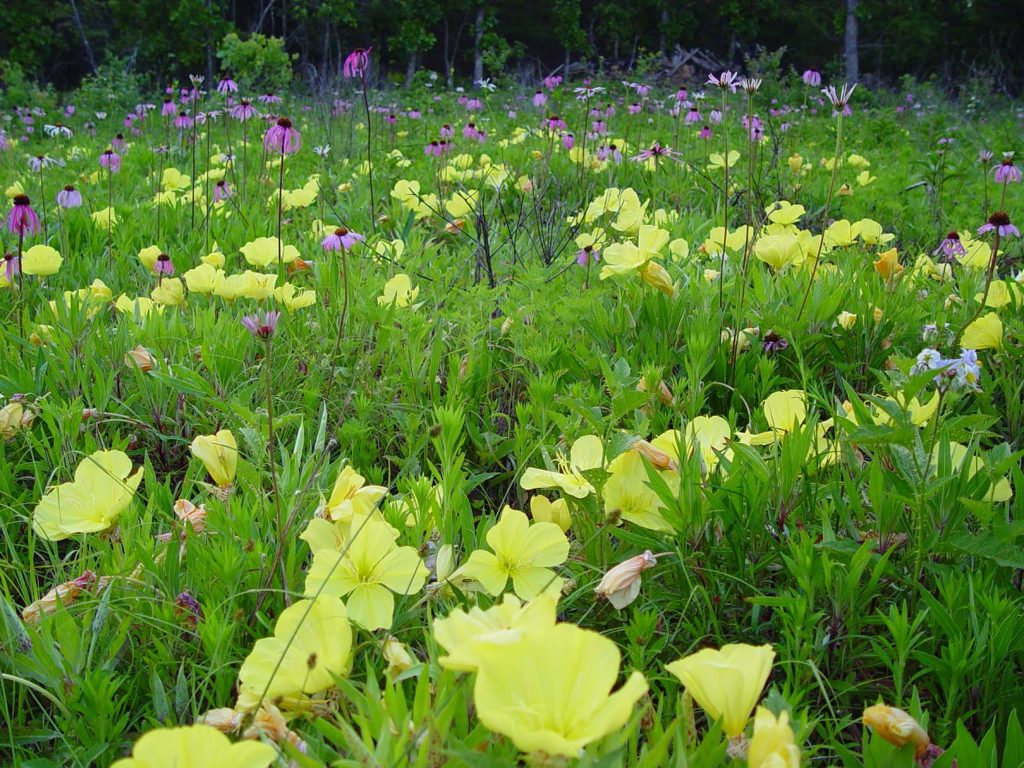
Ecotype vs. Cultivar: Which is best? And What’s Yellow Tagged Seed?
eco•type \’-k-,tp, ‘e-\ noun (ca. 1922) 1 : a subdivision of a species distinctive through environmental selection syn : NATIVE
Hillbilly Paraphrase: this here kinda grass has not been selected for anything, rather it can be traced to a population of the plant that has never been plowed since the days when the bison and elk roamed our grasslands
yel•low tag \’ye-lō tag\ noun 1 : A tag that certifies the seed is collected from natural stands or seed production areas where no selection or testing of the parent population has been made syn : MISSOURI SOURCE IDENTIFIED
Hillbilly Paraphrase: this yellow-colored tag Is used for ecotype seed and means the seed was grown in Missouri and furthermore its ancestors grew in Missouri way back when
cul•ti•var \’kl-t-vär\ noun cultivated + variety (1923) 1 : a subdivision of a species which is distinct in that it can be differentiated by one or more identifiable morphological, physiological, or other characteristics, is uniform in that variations of characteristics are describable, and is genetically stable in that its characteristics will remain unchanged to a reasonable degree of reliability when reproduced syn : VARIETY
Hillbilly Paraphrase: this here kinda grass has been selected for certain characteristics such as height, forage quality, biomass or adaptation to a certain soil type; take note, native grass cultivars are not transgenic (commonly referred to by many folk as GMO)
Scenario #1
Planting Goal: Quail Habitat
Plant of Interest: Little Bluestem
Cultivar or Ecotype: Ecotype
In this case, we want to choose a Little Bluestem that will provide good structure for quail habitat. The variability in the ecotype’s genetics is ideal for this situation.
Scenario #2
Planting Goal: Grazing/Haying
Plant of Interest: Switchgrass
Cultivar or Ecotype: Cultivar
Here, the cultivar ‘Cave-in-Rock’ would be an ideal choice. It was selected for forage quality, seedling development, and tonnage.
Scenario #3
Planting Goal: Prairie Restoration
Plant of Interest: Big Bluestem
Cultivar or Ecotype: Ecotype
To restore a prairie, selection is not necessary. Instead, adaptation and genetic variability are more important. Furthermore, many of the cultivars produce lots of biomass, and this does not promote biodiversity.
Scenario #4
Planting Goal: Biomass
Plant of Interest: Switch Grass
Cultivar or Ecotype: Cultivar
For this purpose, the production of large quantities of biomass is the primary goal. Depending on location, both ‘Alamo’ and ‘Kanlow’ cultivars are great choices. They are tall, growthy, and produce large quantities of biomass.


